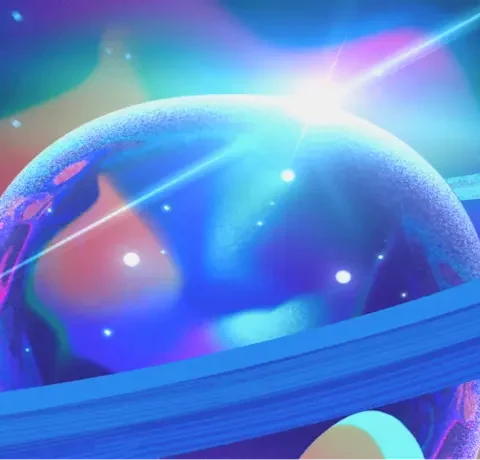When it comes to continuous discovery, the frequency of meaningful customer conversations is often underestimated.
Think about it: How often do you talk to your customers? Forget just shooting the breeze. We mean the last time you really spoke to them and actively listened to understand their point of view?
Chances are, it’s not regular enough.
Engaging in open and ongoing dialogue with users is critical to a product’s long-term success. Marvin CEO Prayag Narula sat down with Paolo Appleby, Group Product Manager at User Interviews, to talk about the basics of talking to your users.
The two provided lots of great advice and practical tips on how to get started with continuous discovery research.
In this article, you’ll learn:
- What is continuous discovery
- Benefits of continuous discovery
- Who is involved in continuous discovery
- How to begin continuous discovery

What Is Continuous Discovery?
Paolo began by making clear the distinction between ‘point-in-time’ and ‘continuous discovery’ research methods.
‘Point-in-time’ studies focus on digging deeper into testing an initial theory. These batch studies tend to be elaborate and resource intensive. As the name suggests, point-in-time studies act on a stagnant theory, and are considerably less flexible than their continuous research counterparts.
‘Continuous discovery’ may sound like an exercise in understanding oneself, a path inwards, a lifelong spiritual journey. In a sense, it is. In a research context, think of it as periodical learning, one that unravels user needs and pain points over time.
Paolo’s team at User Interviews is extremely product-oriented and use continuous discovery to engage in constant dialogue with their customers. Conversations provide insight into constantly shifting customer motivations and grievances in the ongoing process of developing and designing a product. Consequently, Paolo and his colleagues are able to swiftly make direction-altering decisions, and pivot on the fly.
“We want to infuse as many decisions as we can with customer insight. Continuous discovery gives us an avenue to do that,” he said.
Who’s involved in Continuous Discovery?
DISCLAIMER: Throughout their discussion, Prayag and Paolo undertook a continuous discovery of Teresa Torres’ book, “Continuous Discovery Habits.” (See what we did there?) We’ll refer to her book throughout the rest of the article.
Teresa necessitates having three teams collaborate on a product — engineering, design and product management. Ideally, this triad must communicate their insights to each other constantly during a build. At User Interviews, they include another team (or squad) in the mix — data.
“Having that entire group involved in the process is critical to the success of the ongoing decisions — we all bring different perspectives,” said Paolo.
Sharing learnings amongst other squads enables company-wide awareness of user issues. Whether it’s sales or customer service teams, they can assimilate and act on new insights and information.
Researchers at User Interviews are dubbed PWDRs or people who do research (we might steal that acronym). Prayag and Paolo both agreed that for PWDRs (or their equivalent), habitual conversation with customers makes them better product practitioners over time.
Benefits of Continuous Discovery
Paolo has a product background — so he’s used to dealing with ambiguity.
Key to navigating through a problem space is establishing a product sense (we might steal this expression, too). This is a critical part of product managers’s criteria for success, but Paolo believes the whole team must develop a product sense.
So what exactly is product sense?
“You’re getting information, thinking critically and organizing, generating a team understanding of a customer so that when a decision is presented to you, you have initial intuition based on all that information about what you should do and where you should go,” said Paolo.
Paolo and his colleagues use continuous discovery to extract key problems and insights from ambiguous problem spaces, employing critical thinking once they have the information they need.
“(Continuous discovery) increases the likelihood of making a good decision and it increases the speed at which those decisions can be made,” he said.
It’s all about efficiency and quality. With continuous discovery research, make better, more informed decisions, faster.
Learn about tagging data for efficient and speedy analysis.
Getting Started with Continuous Discovery
Start Simple
“To get started, find an opportunity to go talk to customers. Finding a way to do that and a way to do it consistently is the most important step,” Paolo said.
Begin by establishing touch points with sales or customer success teams. Take notes and record your conversations in one place so it’s easy to remember what you’ve discussed before. Build and cultivate these relationships over time.
Paolo joined the first continuous research team at User Interviews alongside a lead engineer and designer. Tasked with a problem area in recruitment, they first took time to understand it fully. After identifying three or four actionable items, the team set about automating the research process in the pursuit of making the recruitment experience smoother. “We baked it (continuous discovery) in from the very beginning — there were no questions about ‘should we do it?’ because it clearly helped us organize the space we were working in,” he said.
A successful first assignment to help spread the UXR gospel.
“It allowed us to tell a story to the rest of the organization about why we made our choices, what we would focus on, and problems we were prioritizing,” said Paolo.
Hallelujah!
Head over to our guide to learn how to get started with your user research strategy.
Practice Active Listening
Whether you’re just starting out not fully knowing what you need to build, or you have a mature product — talk to your customers. It’s a real superpower.
For Paolo and Prayag, conducting their first sets of interviews was intimidating. Both confessed that they weren’t the most patient when they started out. Over time, with practice on their side, they’re now better listeners.
Each shared advice on how to sharpen your skills and conduct effective interviews:
Paolo used a sports analogy (we love these at Marvin, too). He sees the ability to record an interview as a unique opportunity, “Go back and watch the game tape. That was the way I prioritized learning — not just listening to what the customer said, looking for places where I could have asked a better question or waited another five seconds before saying something,” he said.
Prayag shared something he learned early on in his career — the ability to be comfortable with discomfort. “Shut up and let people be uncomfortable for a little bit. Be okay with silence. When people try to fill the silence — those are the best nuggets of insights you’ll get,” he said.
Start working on your awkward silences. (If you enjoy your resources, you’ll definitely want to click that link…)
A Culture that Prioritizes Discovery Research
We’re getting a sense of déjà vu — research should be a part of your company culture. Paolo reflected on the culture from his prior work experience, where previous employers attached varying levels of importance to their research practice. Initially, it can be quite tough to convey the merits of continuous discovery to leadership or teams that don’t regularly hear from customers. Especially when all research doesn’t bear fruit.
“We’re often going to make wrong decisions or get things wrong,” Paolo acknowledged.
That’s the essence of discovery. It may well lead to a dead end, but it’s important to take user feedback from various teams on board, and use that to inform future decisions.
At User Interviews, Paolo spoke of a ‘river of feedback’ — how several research teams at User Interviews make their work not only accessible, but add structure to feedback and channel that information correctly. Everyone has a role to play.
UX Research Roadmaps and Internal Feedback Loops
Lou Rosenfeld talked about the importance of crossfunctional UX research in his recounting of the fable of the six blind men and the elephant.
Speaking of roles, one of our gripes with Teresa’s book is a lack of clarity surrounding a UX researcher’s role during the continuous discovery process. A lead researcher’s duties in an organization are twofold:
- Coach / mentor – a lead researcher is an invaluable asset for any organization. In a coaching role, they bring new researchers up to speed and impart their vast knowledge to help ramp up a company’s research capabilities. When Paolo first joined User Interviews, a number of colleagues were new to the research practice. The head of research guided researchers through creating templates and the right infrastructure (more on this below).
- Strategic researcher – mentoring and delegating continuous discovery to a team allows lead researchers to focus on higher level pursuits. “It makes time for researchers to do strategic research or really go deep on something that the company is interested in learning a lot about,” Paolo said.
A research roadmap is a handy tool for keeping research teams aligned with product related objectives. Similar to the product roadmap, you must tie your research roadmap to overall strategic goals. Ideally, it must be a couple steps ahead of the game to inform future company decisions. The idea is to move from more reactive research to proactive research.
Learn more about integrating UX research into your product roadmap.
Build Research Infrastructure
A roadmap is just the blueprint for developing a company’s research infrastructure. Construction begins with the foundation of a firm’s research practice. A roadmap needs a host of accompanying tools and supporting documentation to define clearly how to interact with a firm’s research infrastructure. We’ve outlined some examples below:
- Frameworks – As the first continuous research team at User Interviews, Paolo and his colleagues began by adapting the framework from Teresa’s book. Over time, it has naturally evolved and they’ve tweaked elements to make it their own.
- Templates – Several product teams operate independently at User Interviews. To share information across teams, Paolo and his colleagues created a snapshot template — to summarize their studies and share highlights with peers. Shared on the company’s internal Slack channel, it provides an easy way for product teams to view and learn from others’ work.
- Guidelines – These establish best practices on how to correctly conduct research – the right methodology for collecting, storing and sharing insights across a company.
Creating a research infrastructure is certainly not a one-size fits all approach. According to Paolo, this supporting infrastructure is important in establishing habits and creating efficiency in organizing a company’s research.
“Anything to decrease the level of effort to maintain the ongoing process. You put the infrastructure in place in order to make a habit easy, or you make it hard and the habit’s easy to break. I think all this (infrastructure) has worked to make habits easier to build,” he said.
How a UX Research Repository Can Improve Your Research Game
The product team at User Interviews maintains its own research repository. Paolo has seen the difference in companies who organize and optimize their repositories compared with those who don’t. Those who prioritize these tasks have a repository that’s much more searchable and user-friendly.
To structure a repository, you must define how to categorize your research and where to house it. This helps organize an ambiguous space (sound familiar?). An accessible and searchable research repository informs teams across an organization.
Want to start a research repository, but don’t know how? You’ve come to the right place.
Our comprehensive guides help you choose a repository tailored to your company’s requirements and help you set yours up for success:
- UX Research Repository: What You Need to Know
- How to Get the Most Out of Your Research Repository
We’re biased, but we recommend Marvin as your centralized research repository. Seamless integration with the apps you already use allows you to bring all your data under one roof. Marvin generates automatic (and accurate!) transcripts from your recorded interviews, freeing up your time for analysis. Continuous discovery generates rapid insights — stitch together these highlights and share playlists with your colleagues. You never know who’ll benefit from hearing user feedback.
We’re also one of the only AI-powered research repositories on the market.

Track Evolving Customer Trends
Products selling like hot cakes one day are quickly forgotten the next. Customers’ needs and desires are in a state of constant flux; they shift due to many factors — the economy, technological innovation, evolving tastes and requirements (to name a few).
Consequently, companies have to stay nimble and alter their approaches frequently. The only way to keep your finger on the pulse is by reaching out to customers on a consistent basis. It doesn’t mean talking to the same users every week — talk to different people in an organization to assemble a diverse, fresh set of perspectives.
When change is the only constant, you need to “move with the times or get left behind.“
“If you’re not talking to your customers, you’re going to miss a huge shift in the way that people feel and think about the products they’re working with,” Paolo concluded.
It’s never too late to begin on the path to continuous discovery. Learn why it’s important to get started today.
Photo by Nabajyoti Ray on Unsplash






